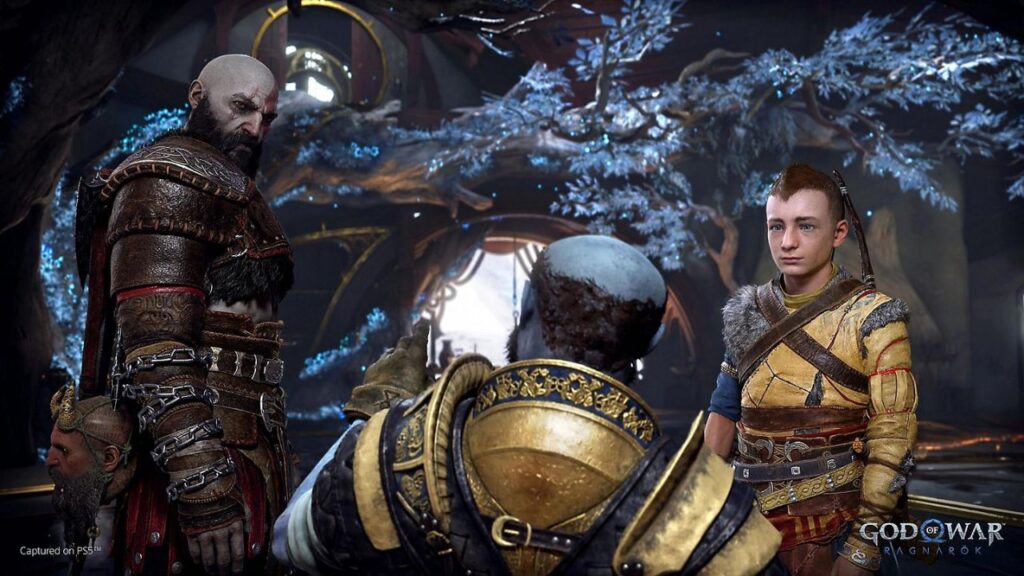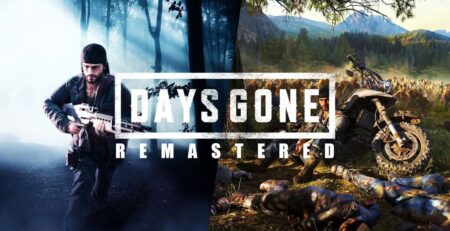
Following the massive success of the God of War reboot in 2018, we’ve all been left wondering where Atreus and Kratos’s story would lead them after spreading the ashes of their loved one on the highest peak in the realms. Where would the revelations of Atreus’ future and Giant genealogy lead the pair? Far and wide, according to God of War Ragnarok. God of War Ragnarok is an action-adventure game developed by Santa Monica Studio and published by Sony.
Three years after the 2018 God of War, Kratos and Atreus have been in hiding, training for the inevitable battle ahead of them with the Aesir gods. Atreus has learned some new skills and is obviously struggling with control over the abilities he’s obtained from his Giant roots. Freya is still looking for revenge for the son that Kratos killed. And Atreus is searching for Tyr, the Norse god of war, behind his father’s back. It’s a messy start to a game full of messy emotions.
To make matters worse, the vision Atreus had at the end of the previous game comes true—Thor interrupts their evening, heralding the arrival of Odin, who only asks Atreus to abandon his search for Tyr in exchange for peace. But, of course, Kratos refuses the proposal, and the pair are on the move again, taking refuge with the Huldra brothers, Brok and Sindri, in their home inside the world tree as they follow Atreus’s lead on Tyr.
The 2018 reboot marked the beginning of a more serious take on Kratos, deepening the character and his relationships as the game explored themes such as fatherhood, identity, and redemption. God of War Ragnarok follows closely behind, continuing the development and evolution of Kratos and Atreus’s relationship while also dealing with the complexity of fighting destiny, finding forgiveness, and dealing with pain. Kratos and Atreus have grown closer, but they still have a long way to go, and these growing pains, along with the misunderstandings that come with an overbearing father who cares too deeply and an impatient reckless son who means well, make for plenty of juicy drama but also incredibly heartfelt, moving scenes. Don’t get me wrong, there’s still plenty of series-typical violence to dole out, but how God of War Ragnarok handles its characters and their complex relationships and deftly touches on weighty themes is a masterpiece.
Similar to the previous iteration of the series, God of War Ragnarok bases many of its characters and settings on Norse mythology. While undoubtedly not wholly accurate to the source material, the developers have weaved in aspects of Norse mythology, like Loki’s affiliation with wolves and shapeshifting, adding a new spin to the mythology while still honoring it. Additionally, the developer’s interpretation of some well-known characters, like Thor and Odin, is a nice breath of fresh air, taking a step away from other prominent depictions of the characters.
This Norse mythology influence goes beyond the characters to the very foes players will fight. While some enemies are similar to those in God of War, there are more enemy types and mini-bosses to take on in God of War Ragnarok, providing that extra bit of variety the last game lacked at times.
The combat builds on the previous game, feeling very similar while adding more options. Kratos’s combo-based action is full-center, with players getting the immediate prospect of wielding the Leviathan Axe or Kratos’s signature double-chained blades, the Blades of Chaos. The Leviathan Axe is infused with ice magic, and the Blades of Chaos light everything on fire. So, while players will likely prefer one over the other, the game throws foes at the player in just a way that makes it beneficial to switch between the two frequently. Adaptation is the key, but so too, is upgrading. While not extensive, each weapon has its own ability upgrade tree and lets players control how they want to fight while encouraging exploration and combat.
Ability upgrades are all XP-related while upgrading your equipment, like your armor, is dependent on resources you find throughout the world through unlocking chests or killing enemies. This is where the puzzles come in. The world is absolutely littered with chests to find, areas to unlock, and bosses to stumble upon. Advancing through the world offers plenty of fun puzzles that take advantage of your various abilities and those of your companions. Some puzzles will be familiar, such as finding three runes to unlock a chest or throwing your axe just right to open a door. But new abilities mean all new puzzles that you’ve never seen before. While the combat is great, the exploration and puzzle-solving kept me coming back for more.
And, unsurprisingly, the graphics are amazing. While the graphics are crisp and detailed, the greatest awe comes from the beautiful settings. The previous game allowed players to access six of the nine realms of Norse mythology. But, in God of War Ragnarok, players can explore all nine. And while you revisit locations from God of War, there’s nothing stale about them; after all, it’s been three years since Kratos and Atreus have visited, so there’s been plenty of changes. In addition, the nine realms are so varied, featuring their own enemies, obstacles, and puzzles to overcome.
It’s hard to find much of anything to complain about when it comes to God of War Ragnarok. The complex characters and storyline provide a plethora of emotions. The developers have breathed so much depth and life into this series that previously focused on combat over narrative substance. There’s still plenty of violent combo-focused action, but the option for exploration and puzzle-solving balances out the mechanics and adds a bit of curve to the otherwise linear storyline.
God of War Ragnarok is available now on PS 5 and PS 4.
God of War Ragnarok
-
Rating - 10/1010/10
TL;DR
It’s hard to find much of anything to complain about when it comes to God of War Ragnarok. The complex characters and storyline provide a plethora of feelings. The developers have breathed so much depth and life into this series that previously focused on combat over narrative substance. There’s still plenty of violent combo-focused action, but the option for exploration and puzzle-solving balances out the mechanics and adds a bit of curve to the otherwise linear storyline.






